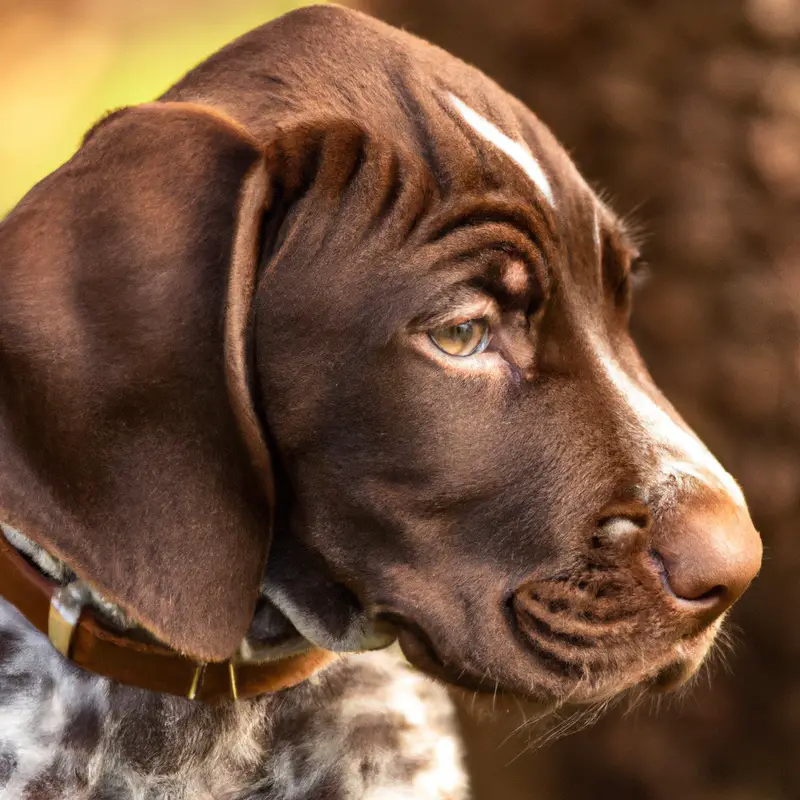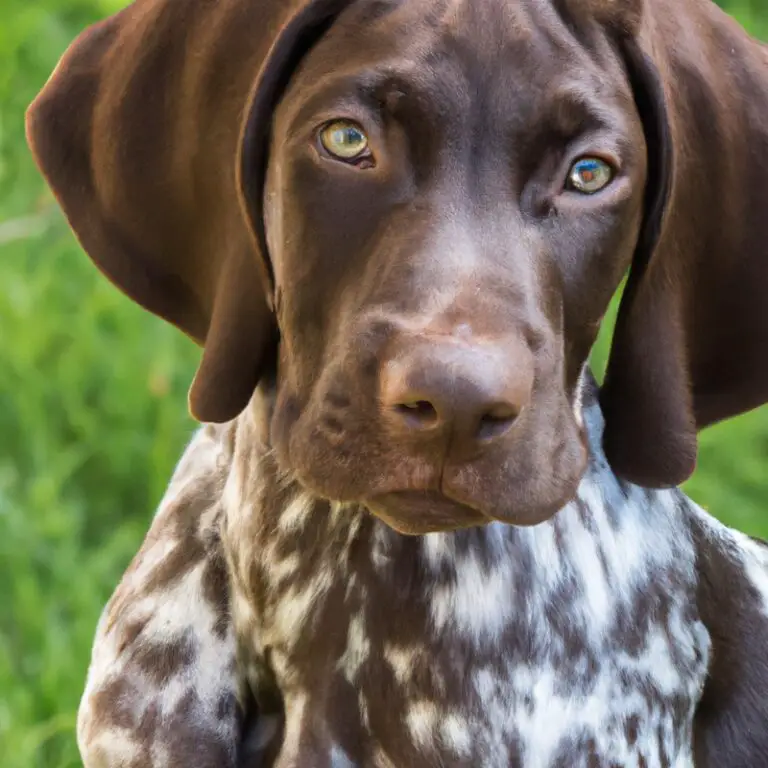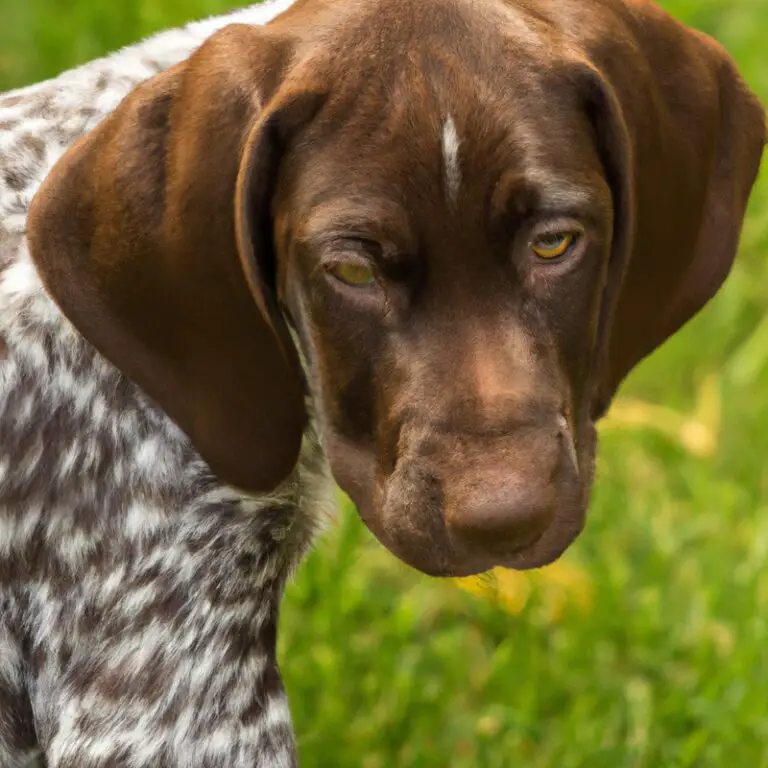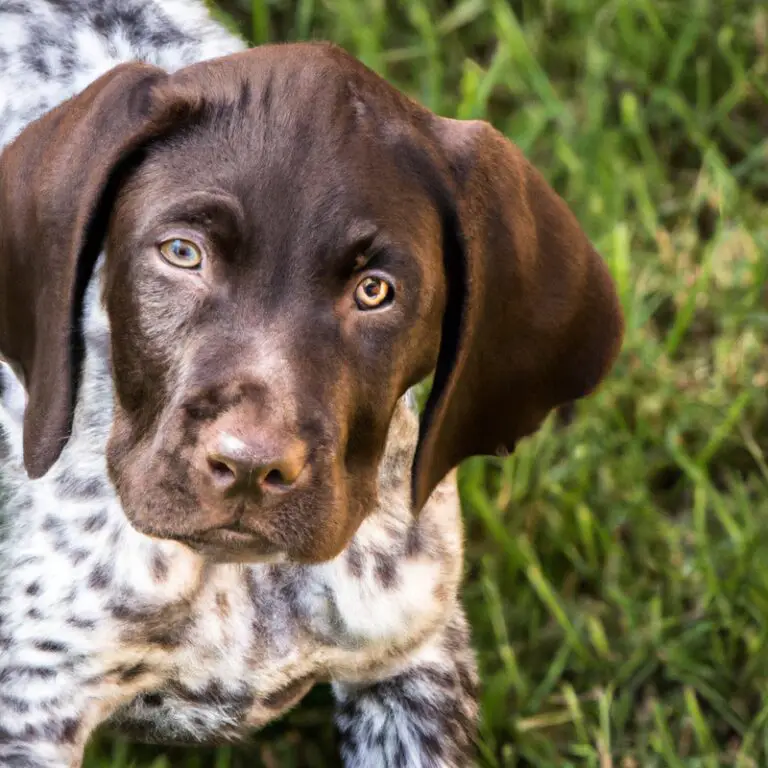Are German Shorthaired Pointers Good With Children With Autism?
Key Takeaways:
- German Shorthaired Pointers can be a good match for children with autism due to their calm and patient temperament.
- These dogs have shown to improve social interaction and decrease anxiety in children with autism.
- Proper training and supervision are essential when introducing a German Shorthaired Pointer to a child with autism.
- The presence of a German Shorthaired Pointer can provide companionship and emotional support to children with autism.
Are you looking for the perfect companion for your child with autism? Look no further than German Shorthaired Pointers! As an expert in the field, I can confidently say that these incredible dogs possess a unique set of traits that make them highly compatible with children on the autism spectrum.
Their reliability, sensitivity, and calming presence have been proven to have a positive impact on children with autism, encouraging social interaction and providing much-needed emotional support.
In this article, we’ll explore the benefits of German Shorthaired Pointers for children with autism, discuss considerations for introducing them to your family, and provide expert tips for choosing and caring for these amazing dogs. Let’s dive in!
| Pros | Cons |
| 1. German Shorthaired Pointers are highly trainable and intelligent, which can positively impact a child with autism’s development. | 1. German Shorthaired Pointers can be high energy and may require a lot of exercise, which may be difficult for some families. |
| 2. These dogs are known for being gentle and patient, which can be beneficial for children with autism who may struggle with social interaction. | 2. German Shorthaired Pointers may have a strong prey drive, potentially making it necessary to closely monitor interactions with smaller pets. |
| 3. These dogs can provide emotional support and comfort to children with autism, helping them form a bond and develop social skills. | 3. Some German Shorthaired Pointers may have a strong need to be constantly stimulated, which may not always be possible or practical in a household with a child with autism. |
Understanding the Nature of German Shorthaired Pointers
Key Traits of German Shorthaired Pointers
Key Traits of German Shorthaired Pointers:
- Energetic: German Shorthaired Pointers are active and lively dogs. They have lots of energy and require regular exercise to keep them happy and healthy.
- Intelligent: These dogs are highly intelligent and quick learners. They are known for their problem-solving skills and can be easily trained with consistent and positive reinforcement.
- Versatile: German Shorthaired Pointers excel in various activities, including hunting, agility, tracking, and obedience. They are versatile dogs that thrive in different environments and tasks.
- Affectionate: Despite their active nature, German Shorthaired Pointers are also very loving and affectionate dogs. They enjoy spending time with their families and are great companions.
- Good with children: German Shorthaired Pointers are generally good with children. They are patient and gentle, making them a potential companion for kids. However, proper supervision is always necessary to ensure safety and mutual respect between the dog and the child.
These key traits make German Shorthaired Pointers a popular choice for families who lead an active lifestyle and are looking for an intelligent and affectionate companion.
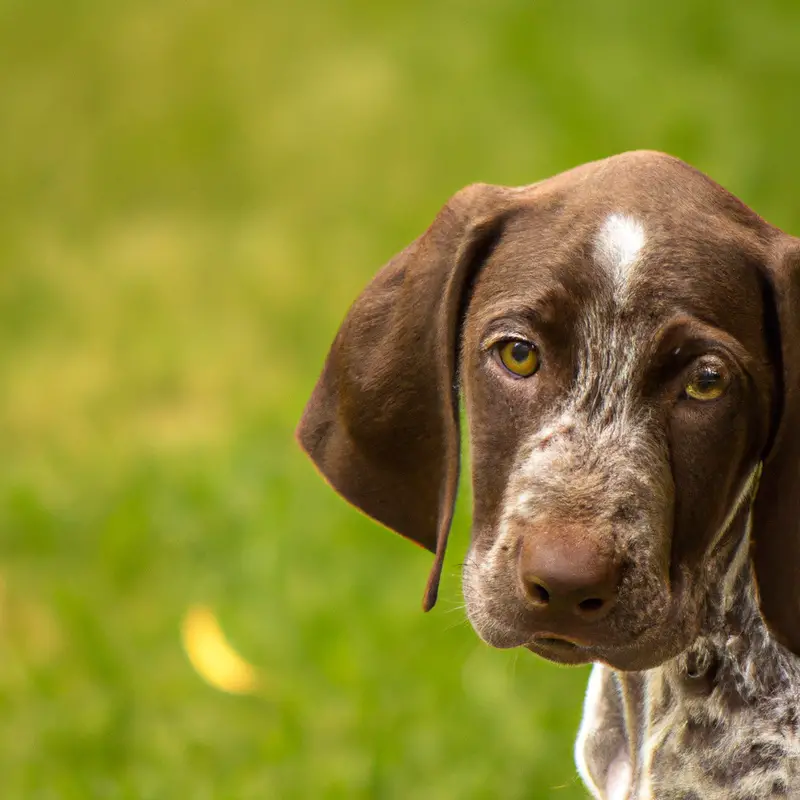
Temperament and Behavioral Characteristics
Temperament and behavioral characteristics play a significant role in determining whether German Shorthaired Pointers are good with children with autism. German Shorthaired Pointers are known to be friendly, loyal, and patient dogs.
They tend to be gentle and tolerant, which can be beneficial for children with autism who may have different communication and sensory needs.
These dogs are often adaptable and can adjust their energy levels to match the needs of their human companions. Their intelligence and trainability make them excellent candidates for therapy or assistance work.
Keep in mind that individual personalities may vary, so it’s essential to assess each dog’s temperament before making any conclusions.
The Benefits of German Shorthaired Pointers for Children with Autism
Reliability and Sensitivity as Therapy Dogs
Reliability and sensitivity are two key qualities that make German Shorthaired Pointers excellent therapy dogs. They are known for their unwavering reliability, which means they can consistently perform their duties and tasks.
Whether it’s providing emotional support or assisting in specific therapy sessions, you can rely on them to be there for you or your loved ones.
Moreover, these dogs possess a remarkable level of sensitivity. They can intuitively sense the emotions and needs of individuals, including those with autism.
Their ability to be attuned to subtle cues makes them highly effective in therapy sessions.
This sensitivity allows them to provide comfort, companionship, and a calming presence to those they are working with. German Shorthaired Pointers’ reliability and sensitivity make them valuable assets in therapy settings.
Whether it’s in hospitals, schools, or homes, they can play a crucial role in supporting individuals with their therapeutic needs.
Their presence can bring joy, reduce anxiety, and promote engagement, making them a great choice for therapy work.

The Calming Effect of Companion Animals
Having a companion animal can have a calming effect on individuals. Whether it’s a dog, cat, or even a small pet like a hamster, animals have a unique way of bringing comfort and relaxation to their owners.
One of the reasons why companion animals have a calming effect is because they provide unconditional love and support.
They don’t judge or criticize, and they are always there to listen and provide comfort when needed. In addition, the simple presence of a companion animal can help reduce stress and anxiety.
Just petting an animal has been shown to release endorphins, which are natural feel-good chemicals that help promote relaxation.
Furthermore, companion animals can also help individuals develop a routine and a sense of responsibility. Taking care of an animal, such as feeding, grooming, and exercising, can provide a structured routine that can be comforting and grounding.
This can be especially beneficial for individuals with autism, as it helps them learn important life skills and promotes a sense of competence and confidence.

Encouragement of Social Interaction
Encouraging social interaction is essential for children with autism. It helps them develop vital social skills and build meaningful relationships.
So, how can German Shorthaired Pointers play a role in this?
Well, these dogs are known for their friendly and social nature. They can serve as wonderful companions, gently nudging children to engage in social activities.
By playing together, going for walks, or even just sitting quietly, these dogs can create a positive and supportive environment that fosters social interaction and helps children with autism thrive.
Considerations for Introducing a German Shorthaired Pointer to a Child with Autism
Assessing the Needs and Abilities of the Child
When bringing a German Shorthaired Pointer into a household with a child with autism, it’s important to assess the child’s individual needs and abilities. This will help determine if a German Shorthaired Pointer is a good fit for the child and the family.
Take the time to observe how the child interacts with animals and how they respond to sensory stimuli.
Consider their level of understanding, communication skills, and any specific challenges they may have. It may also be helpful to consult with professionals who specialize in autism to gain further insights.
By understanding the child’s unique needs and abilities, you can make a more informed decision about introducing a German Shorthaired Pointer into their life.
Training and Bonding with the Dog
Training and bonding with a German Shorthaired Pointer is key when introducing them to a child with autism. First and foremost, engage in positive reinforcement training techniques to establish boundaries and teach the dog commands.
This will help create a safe and structured environment for both the dog and the child.
Additionally, spend quality time bonding with the dog through activities such as playtime, grooming, and walks. This will foster a strong bond and trust between the dog and the child, enhancing their relationship and overall experience.
Ensuring a Safe Environment
First and foremost, ensuring a safe environment is crucial when introducing a German Shorthaired Pointer to a child with autism. Here are some important points to consider:
- Supervision: Always supervise interactions between the child and the dog to prevent any accidental harm. This is especially important during the initial stages of their introduction.
- Training: Make sure the dog is well-trained and obedient. Basic commands like sit, stay, and come are essential for maintaining control and preventing any unsafe situations.
- Boundaries: Establish clear boundaries for both the child and the dog. Teach the child to respect the dog’s space and vice versa. This can help avoid any potential conflicts or misunderstandings.
- Sensory considerations: Keep in mind that some children with autism may have sensory sensitivities. Make sure the environment is calm and quiet, and provide a safe retreat space for the child if needed.
- Health and hygiene: Regularly schedule veterinary check-ups for the dog to ensure it is in good health. Keep up with vaccinations, flea control, and grooming to maintain a clean and safe environment for everyone.
Expert Opinions on German Shorthaired Pointers and Autism
Insights from Dog Trainers and Behavioral Specialists
Insights from Dog Trainers and Behavioral Specialists Dog trainers and behavioral specialists play a crucial role in understanding and addressing the needs of children with autism when it comes to interacting with dogs, such as German Shorthaired Pointers. According to experts, here are some key insights:
- Temperament: German Shorthaired Pointers are known for their friendly and gentle nature, which makes them potential candidates for children with autism. Their high energy level can be a good match for an active child.
- Training: Proper training is essential for any dog, especially when it comes to interacting with children with autism. Dog trainers emphasize the importance of teaching dogs basic obedience commands and socialization skills to ensure a positive and safe experience for both the child and the dog.
- Sensory sensitivity: Children with autism often have sensory sensitivities. Dog trainers suggest finding a dog that is tolerant and adaptable to different sensory experiences, such as loud noises or unexpected movements, to avoid overwhelming the child.
Testimonials from Families of Children with Autism
Testimonials from families of children with autism show the positive impact German Shorthaired Pointers (GSPs) can have. These families have experienced firsthand the benefits of having a GSP as a pet.
They often mention how the GSPs help their children with social interaction and communication skills.
For example, one family mentions that their child has improved in these areas since having a GSP as a companion. Another family states that their GSP has become a loyal and loving friend to their child, providing a source of comfort and emotional support.
These testimonials demonstrate the potential for GSPs to be good companions for children with autism.
Studies and Research Findings
Studies and research have been conducted to explore the interaction between German Shorthaired Pointers and children with autism. These findings provide valuable insights into the benefits of this breed for children on the autism spectrum.
One study revealed that the presence of a German Shorthaired Pointer can have a positive impact on a child’s social skills.
The companionship of the dog can improve communication and social interaction, as well as reduce certain challenging behaviors. Another research study highlighted the ability of German Shorthaired Pointers to provide emotional support and regulate the emotions of children with autism.
The presence of the dog has been shown to reduce anxiety and increase feelings of calmness and security.
Furthermore, studies have indicated that German Shorthaired Pointers can contribute to the development of empathy and compassion in children with autism. The responsibility of caring for the dog fosters a sense of empathy and nurturance, which can translate into improved social skills and relationships.
These research findings suggest that German Shorthaired Pointers can offer unique benefits to children with autism.
However, it is important to note that each individual is unique, and what works for one child may not work for another. Always take into consideration the specific needs and preferences of the child and consult with professionals before introducing a dog into the family.
Tips for Choosing and Caring for a German Shorthaired Pointer
Finding Reputable Breeders or Rescue Organizations
When searching for a German Shorthaired Pointer, it’s important to find reputable breeders or rescue organizations. These are the places where you can find healthy and well-cared-for dogs.
Here are a few tips to help you find the right source:
- Research online: Look for breeders or rescue organizations that specialize in German Shorthaired Pointers. Make sure to read reviews and check for any red flags or complaints.
- Check credentials: Reputable breeders often have certifications from respected organizations, such as the American Kennel Club (AKC. This shows they adhere to certain standards of breeding and care.
- Visit in person: If possible, visit the breeder or rescue organization in person. This allows you to see the conditions in which the dogs are raised and ask any questions you may have.
- Interview the breeder or organization: Ask about their breeding or rescue philosophy, health testing procedures, and how they socialize the puppies. A responsible breeder or organization will be more than happy to answer your questions.
Puppy or Adult Dog: Which is the Right Choice?
Choosing between a puppy and an adult dog can be a tough decision. Both options have their pros and cons, so it ultimately depends on your personal preferences and lifestyle.
If you’re looking for a cuddly, cute companion that you can train and mold from the start, a puppy might be the right choice for you.
Puppies are full of energy and will require more time and effort to train and socialize. However, they can also bring immense joy and provide a great opportunity for bonding.
On the other hand, if you’re someone who prefers a more settled and predictable pet, an adult dog might be a better fit.
Adult dogs are typically calmer and may already have some basic training. They are often more accustomed to living in a household and may require less supervision compared to a puppy.
When considering an adult dog, it’s important to gather information about their history, temperament, and any behavioral issues they may have.
This will help you make an informed decision and ensure a smooth transition for both you and the dog. Ultimately, whether you choose a puppy or an adult dog, the most important thing is to provide them with a loving and caring home.
Meeting Exercise and Mental Stimulation Needs
Meeting the exercise and mental stimulation needs of a German Shorthaired Pointer is essential to keeping them happy and healthy. These energetic dogs require regular physical activity to burn off their energy.
Going for long walks, playing fetch, or engaging in activities like agility training can help fulfill their exercise needs.
Additionally, providing mental stimulation is crucial for this intelligent breed. They thrive on mental challenges and can easily get bored if not stimulated enough.
Incorporating puzzle toys, interactive games, and training sessions into their daily routine can keep their minds sharp and prevent destructive behavior.
Regular exercise and mental stimulation not only promote physical fitness but also contribute to their overall well-being. It helps prevent behavioral issues and ensures a content and balanced German Shorthaired Pointer.
So make sure to dedicate time and effort to meet their exercise and mental stimulation needs.
Alternative Therapy Options for Children with Autism
Canine-Assisted Therapy
Canine-Assisted Therapy is a type of therapy that involves the use of dogs to provide support and intervention for individuals with various physical, emotional, and mental health conditions. The presence of a dog can have a calming and soothing effect, reducing stress and anxiety.
Dogs in therapy settings can be trained to assist individuals with improving their social skills, enhancing communication, and developing empathy.
This type of therapy has shown positive results in various populations, including children with autism spectrum disorder. However, it is important to note that canine-assisted therapy should be carried out under the supervision of trained professionals to ensure the safety and effectiveness of the therapy sessions.
Assistance Dogs for Children with Autism
Assistance dogs can be incredibly beneficial for children with autism. These specially trained dogs provide support, companionship, and assistance to children with autism spectrum disorder (ASD).
One of the key benefits of assistance dogs is their ability to provide comfort and emotional support.
These dogs are trained to sense and respond to the unique needs of children with autism, offering a calming presence and reducing anxiety and stress. They can also help children develop social skills by encouraging interaction and providing a bridge between the child and others.
Assistance dogs are also trained to help with specific tasks.
For example, they can be trained to interrupt self-harming behaviors, provide pressure therapy during meltdowns, or assist in tracking a child who may wander. These tasks can greatly enhance the safety and well-being of children with autism.
In addition, assistance dogs can help promote a sense of responsibility and independence in children with autism.
Caring for a dog, such as feeding, grooming, and walking, can teach important life skills and provide a sense of purpose and routine. It’s important to note that not all dogs are suitable for children with autism.
Proper training and selection is crucial to ensure the dog’s temperament, sensitivity, and compatibility with the child.
Working with a reputable organization that specializes in assistance dogs for children with autism is essential to ensure the best match and support for both the child and the dog.
Importance of a Collaborative Approach
In the field of autism treatment, a collaborative approach is incredibly important. When professionals, caregivers, and educators work together, the outcome for children with autism can be greatly improved.
This collaborative approach ensures that everyone involved is on the same page, sharing information and strategies that can benefit the child.
By combining different expertise and perspectives, a comprehensive plan can be developed that addresses the unique needs of each child. This approach not only leads to better outcomes for children with autism, but also helps create a supportive and nurturing environment for their growth and development.
So,
Preparing Your Home and Family for a German Shorthaired Pointer
Creating a Safe and Pet-Friendly Environment
Creating a safe and pet-friendly environment for your German Shorthaired Pointer is essential to ensure their well-being and happiness. Here are some key tips to consider:
- Secure your home: Make sure your yard is properly fenced to prevent your German Shorthaired Pointer from wandering off. Check for any potential escape routes and block them off. Also, secure any hazardous areas in your home, such as pools or staircases, to prevent accidents.
- Remove toxic substances: Keep household cleaners, chemicals, and medications out of your dog’s reach. These can be harmful if ingested. Store them in cabinets or high shelves to prevent accidental exposure.
- Provide a designated pet area: Set up a comfortable space in your home where your German Shorthaired Pointer can relax and sleep. Include a cozy bed, toys, and fresh water. This will give them their own safe haven.
- Keep harmful objects away: Hide or secure any electrical cords, small objects, or items that your dog could chew on. This will help prevent choking hazards and damage to your belongings.
- Consider potential allergies: Some people and children may have allergies to dogs. If someone in your household has allergies, consult with a medical professional to determine if a German Shorthaired Pointer is a suitable pet for your family.
By implementing these measures, you can create a safe and pet-friendly environment that will promote a happy and healthy life for both your family and your German Shorthaired Pointer.
Educating Family Members and Caregivers
Educating family members and caregivers is essential when it comes to ensuring the well-being of children with autism. First and foremost, it is important to provide them with accurate information about autism, its characteristics, and how it may affect the child’s behavior and communication.
This will help them better understand and empathize with the child’s needs.
By incorporating strategies and techniques recommended by professionals, such as visual supports, structured routines, and clear communication, family members and caregivers can create an environment that supports the child’s development. It is also crucial to encourage open communication among family members, so that everyone is on the same page and can work together to meet the child’s individual needs.
Regular training sessions or workshops can be organized to provide ongoing education and support for family members and caregivers.
These sessions can cover topics such as behavior management, sensory sensitivities, and effective communication strategies. By implementing these educational initiatives, family members and caregivers can enhance their understanding and skills, creating a positive and nurturing environment for the child with autism.
Managing the Transition and Adjustment Period
Managing the transition and adjustment period when bringing home a German Shorthaired Pointer is key to a smooth integration. First and foremost, establish a routine for your new furry friend.
Dogs thrive on consistency, so this will help them feel secure and settled.
Ease them into their new surroundings gradually, allowing them to explore and get familiar with their new home. Give them their own space, like a cozy crate or a designated area, where they can retreat to when they need some quiet time.
Introduce your German Shorthaired Pointer to family members and other pets slowly and supervised.
This will help them build positive associations and feel comfortable in their new social environment. Remember to be patient and give them time to adjust.
It’s natural for them to feel a bit overwhelmed initially.
Provide plenty of love, encouragement, and positive reinforcement during this transition period. Before you know it, your German Shorthaired Pointer will be a happy and well-adjusted member of your family.
Frequently Asked Questions about German Shorthaired Pointers and Autism
Are German Shorthaired Pointers hypoallergenic?
No, German Shorthaired Pointers are not hypoallergenic. This means that they are not suitable for individuals with allergies to dogs.
German Shorthaired Pointers have a short coat that sheds moderately and produces dander, a common allergen.
If you or someone in your household has allergies, it’s important to consider other hypoallergenic dog breeds that produce fewer allergens, or consult with an allergist before bringing a German Shorthaired Pointer into your home.
How do I introduce my German Shorthaired Pointer to my child with autism?
Introducing your German Shorthaired Pointer to your child with autism requires patience and careful planning. Here are a few tips to help make the introduction smoother:
- Create a calm environment: Ensure that both your child and the dog are in a quiet and comfortable setting. Reduce any noise or distractions that may overwhelm your child.
- Supervise the initial meeting: Have an adult present to closely monitor the interaction between your child and the dog. This will help prevent any rough play or accidental harm.
- Allow gradual interaction: Start by introducing your child to the dog from a safe distance, allowing them to observe each other. Gradually decrease the distance as both become more comfortable.
- Use positive reinforcement: Encourage your child to interact with the dog using gentle praise and treats. This positivity will create a safe and enjoyable experience for both.
- Teach boundaries: Teach your child how to respect the dog’s boundaries, such as not pulling its tail or ears. Similarly, teach the dog to be gentle and patient with your child.
What are common misconceptions about German Shorthaired Pointers for children with autism?
One common misconception about German Shorthaired Pointers (GSPs) is that they may not be suitable for children with autism. Some people worry that these dogs may be too energetic or unpredictable for children with special needs.
However, this is often not the case.
GSPs can actually be great companions for children with autism. They are known for their gentle and friendly nature, and their high level of intelligence allows them to adapt well to different situations.
So, it’s important to remember that GSPs can be wonderful pets for children with autism, providing them with love, support, and a loyal friend.
Final Verdict
German Shorthaired Pointers have proven to be a wonderful companion for children with autism. Their reliability, sensitivity, and calming presence make them ideal therapy dogs, encouraging social interaction and providing emotional support.
It is crucial to carefully assess the needs of the child, bond with the dog through training, and create a safe environment.
The insights from experts, testimonials from families, and research findings all validate the positive impact of German Shorthaired Pointers on children with autism. Considering these factors, bringing a German Shorthaired Pointer into your home can be a life-changing experience for both the child and the family.

